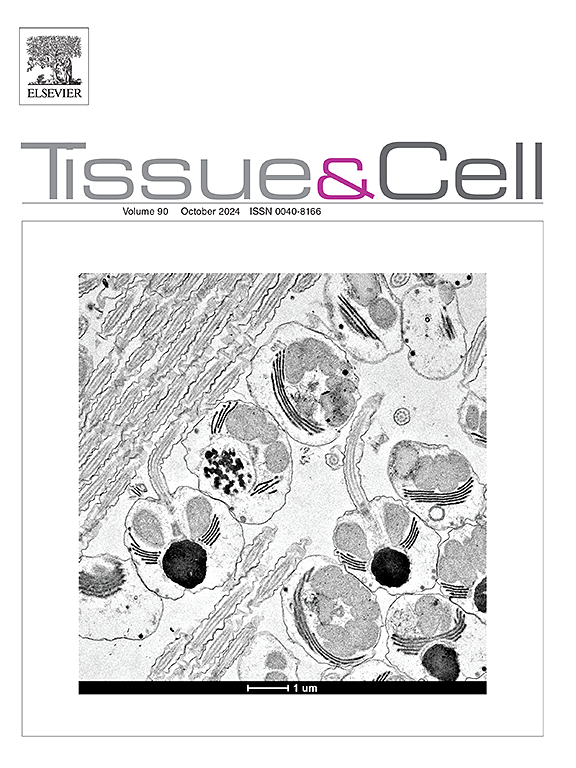Cellular morphometry of the neoplastic microenvironment and its association with the immunoexpression of interleukin-4
IF 2.7
4区 生物学
Q1 ANATOMY & MORPHOLOGY
引用次数: 0
Abstract
The objective of this research is to perform a cellular morphometric analysis, identify nuclear malignant keratinocyte irregularities, compare the immunoexpression of interleukin-4 (IL-4) and investigate neoplastic invasion depth in Lower Lip Squamous Cell Carcinoma (LLSCC) and Oral Tongue Squamous Cell Carcinoma (OTSCC) cases. A total of 60 cases were analyzed (30 on the lower lip and 30 on the oral tongue). Concerning the cellular morphometry analysis, 16 malignant keratinocytes from each case were analyzed. IL-4 immunoexpression was analyzed in the parenchyma and stroma of the investigated lesions, in both deep and superficial fields, employing an image analysis software. ANOVA and Spearman’s correlation statistical tests were applied. Total IL-4 immunoexpression was higher in LLSCC cases in all analyzed fields (p: 0.007); Positive correlation between the cellular perimeter of malignant keratinocytes in the superficial fields and lesion invasion depth was observed (p: 0.009), as well as between the total cellular area and neoplastic invasion depth (p: 0.038). A negative correlation, on the other hand, was observed between superficial lesion parenchyma IL-4 immunoexpression and nuclear perimeter in superficial fields (p: 0.007), as well as between total deep stroma IL-4 immunoexpression and neoplastic invasion depth (p: 0.008). These findings suggest that SCC displaying greater neoplastic invasion depth exhibit greater nuclear and cellular morphology alterations, albeit reducing IL-4 expression, potentially due to loss of the differentiated cell phenotype.
求助全文
约1分钟内获得全文
求助全文
来源期刊

Tissue & cell
医学-解剖学与形态学
CiteScore
3.90
自引率
0.00%
发文量
234
期刊介绍:
Tissue and Cell is devoted to original research on the organization of cells, subcellular and extracellular components at all levels, including the grouping and interrelations of cells in tissues and organs. The journal encourages submission of ultrastructural studies that provide novel insights into structure, function and physiology of cells and tissues, in health and disease. Bioengineering and stem cells studies focused on the description of morphological and/or histological data are also welcomed.
Studies investigating the effect of compounds and/or substances on structure of cells and tissues are generally outside the scope of this journal. For consideration, studies should contain a clear rationale on the use of (a) given substance(s), have a compelling morphological and structural focus and present novel incremental findings from previous literature.
 求助内容:
求助内容: 应助结果提醒方式:
应助结果提醒方式:


